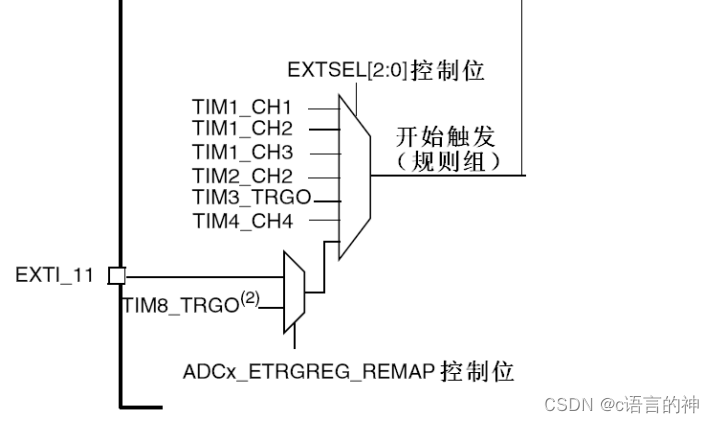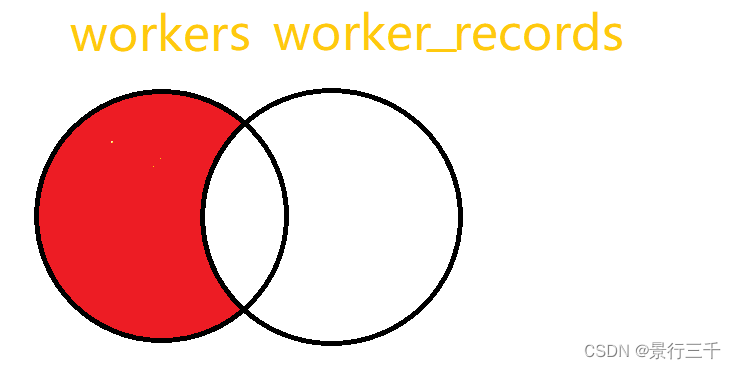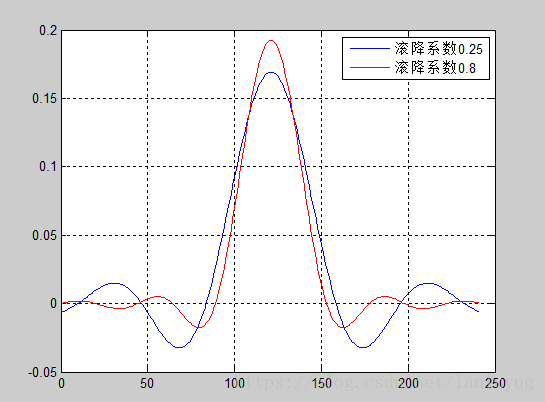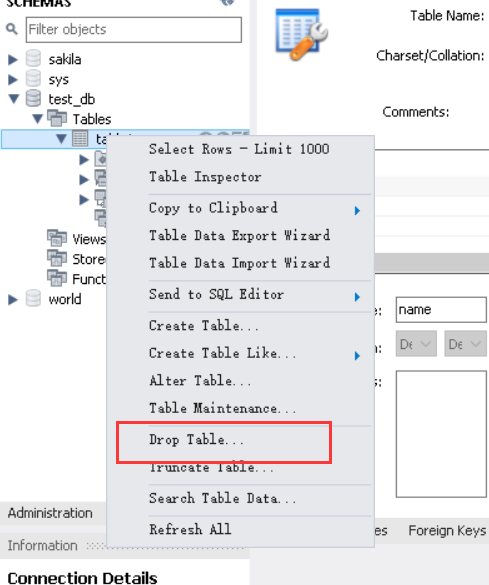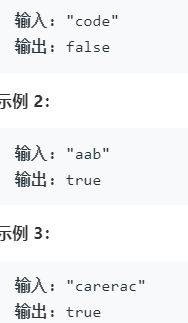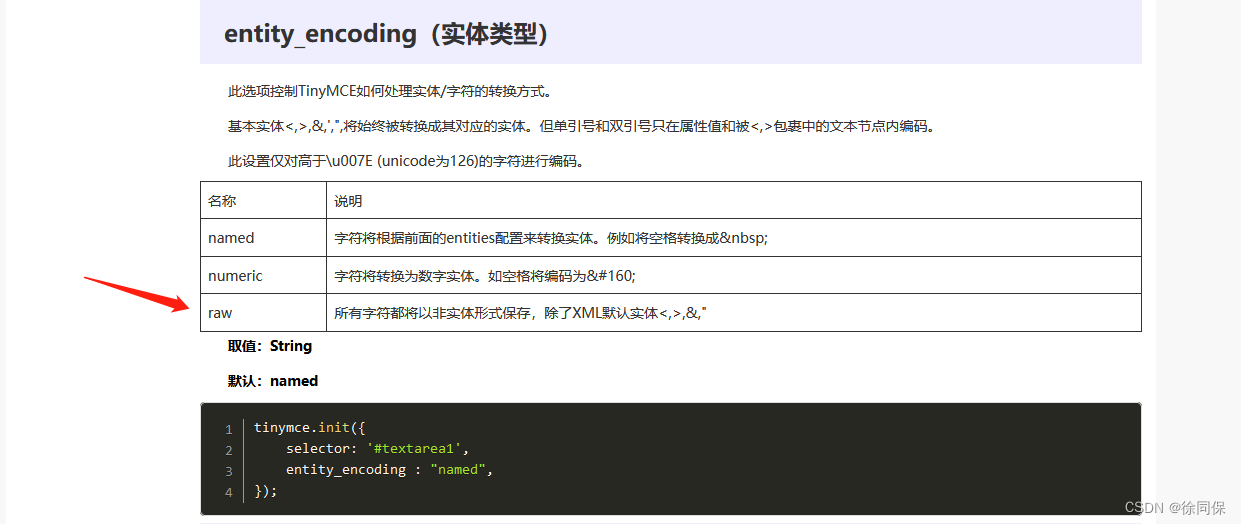当前位置:网站首页>After the staged testing is complete, have you performed defect analysis?
After the staged testing is complete, have you performed defect analysis?
2022-08-05 00:32:00 【love coriander】
In recent years, everyone has been talking about retests, and of course testing needs to be retested.
Mumu recommends to do a defect analysis after the phased test work is completed, and use objective data to analyze the existing problems during the review. It is no longer to express subjective feelings, but to let "data speak", therebypropose improvement plans.
The following content will take last year's annual defect analysis report as an example to share several dimensions of my defect analysis.
Product line as dimension
Statistical analysis of defect data
If we need to participate in the testing of multiple product lines during the testing process, we can use the product line as the dimension to count the defect data, and through the comparison statistics between the product lines, we can take corresponding improvement measures in the later testing process.
Example:
Product lines with poor self-test conditions can ask R&D personnel to strengthen self-test;
Product lines with a large number of defects can increase investment in testing resources;
Product lines with high change rate can be fed back to the person in charge of the corresponding product line to strengthen change management control.
The following screenshot shows the defect analysis list:

Subsystem or submodule as dimension
Statistical analysis of defect data
We can also use the subsystems or sub-modules of a single product line as a dimension to count defect data, as shown in the following screenshot:
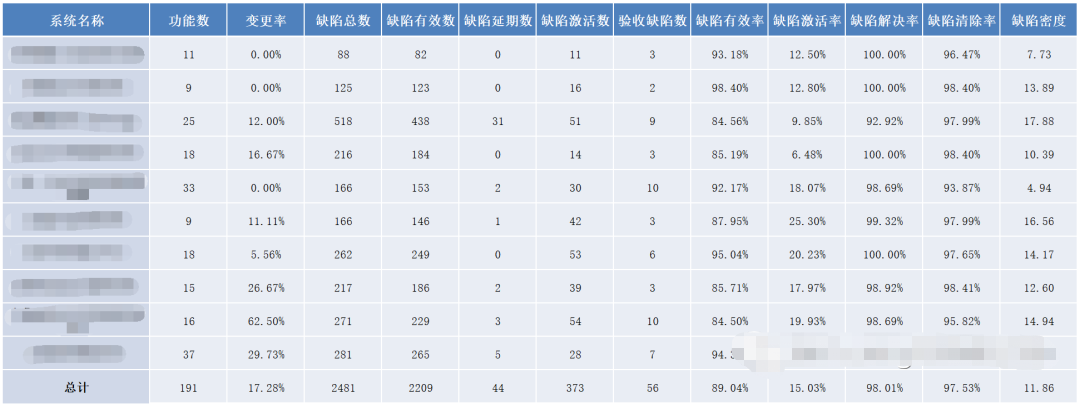
dimensioned by defect level
Statistical analysis of defect data
Analyze the defect level as the dimension, which can reflect the product's self-test status and the quality of the test, as shown in the following screenshot:
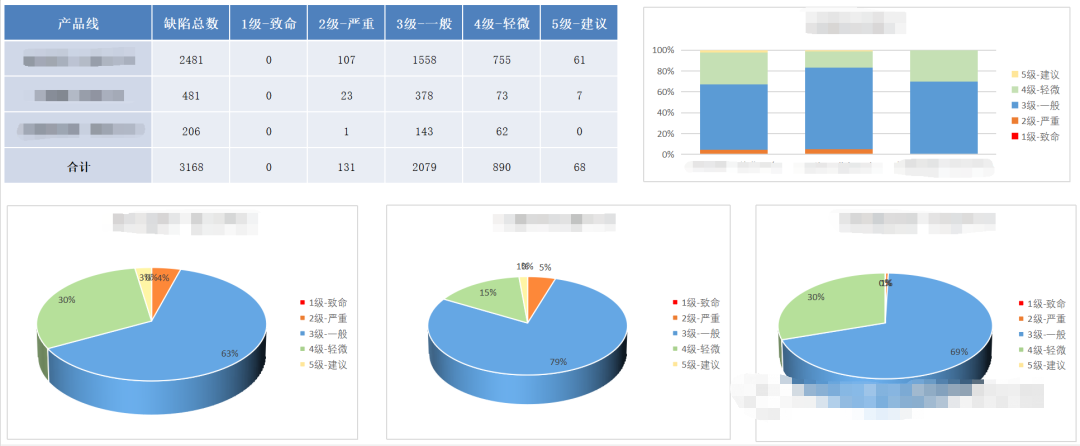
dimensioned by defect type
Statistical analysis of defect data
Analyzing the defect type as the dimension can reflect the main defect types of the product, as shown in the following screenshot:
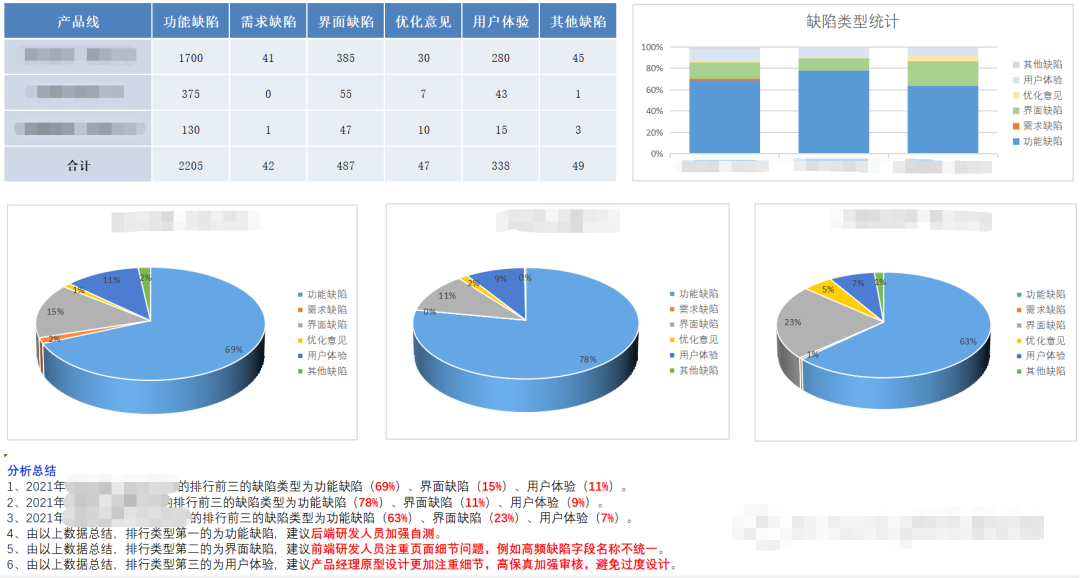
dimensioned by defective keywords
Statistical analysis of defect data
Analysis with defect keywords as the dimension can reflect the high-frequency defect types of products, as shown in the following screenshot:
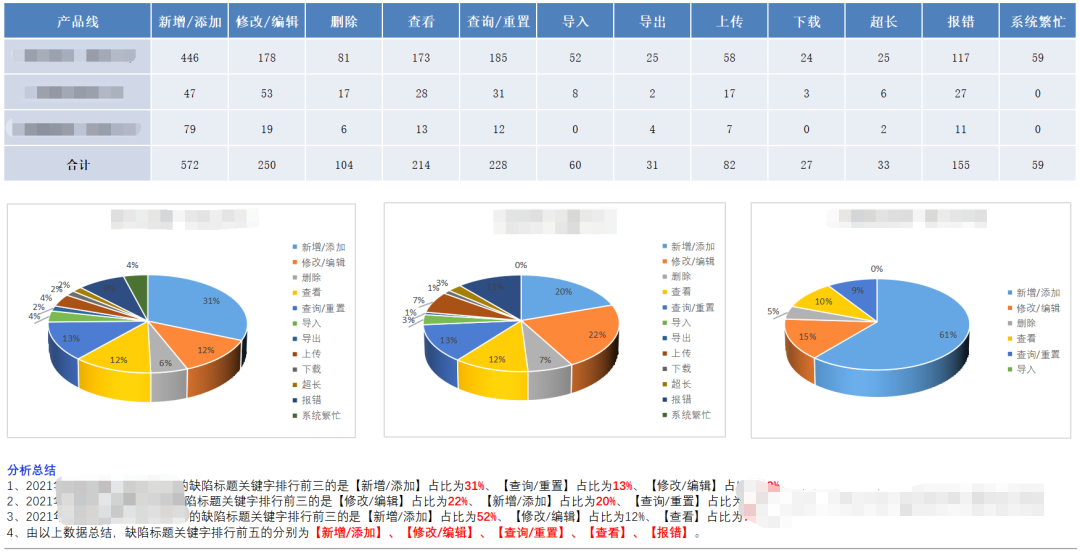
Of course, there is also a very important dimension to count the defect data in the human dimension:
For example, product personnel can count their demand change rate, number of design defects, number of delayed defects, etc.;
R&D personnel can count the total number of solved defects, secondary defect rate, defect activation rate, etc.;
Testers can count indicators such as the effective number of defects, the effective rate of defects, and the removal rate of defects.
Data can only be used as a reference to objectively reflect existing problems, and it is not recommended to directly use it as an evaluation indicator for personnel performance.
Because the number of defects reported by different products and different testers varies greatly.The main purpose of defect analysis is to reflect the actual problems with objective data, and to put forward suggestions for improvement on the deficiencies. Only with continuous improvement can product quality be improved.
Now I invite you to join our software testing learning exchange group: [746506216], note "join the group", everyone can join togetherDiscuss and communicate software testing, learn software testing techniques, interviews and other aspects of software testing together. There will also be free live classes to gain more testing skills. Let's advance Python automated testing/test development together and move towards a high salaryroad.
Friends who like software testing, if my blog is helpful to you, if you like my blog content, please "Like", "Comment" and "Favorite" with one click!
边栏推荐
- canvas Gaussian blur effect
- Software testing interview questions: What stages should a complete set of tests consist of?
- JUC线程池(一): FutureTask使用
- 2022杭电多校训练第三场 1009 Package Delivery
- 软件测试面试题:BIOS, Fat, IDE, Sata, SCSI, Ntfs windows NT?
- Software Testing Interview Questions: What do you think about software process improvement? Is there something that needs improvement in the enterprise you have worked for? What do you expect the idea
- 数据类型-整型(C语言)
- #yyds dry goods inventory #Switching equipment serious packet loss troubleshooting
- How to automatically push my new articles to my fans (very simple, can't learn to hit me)
- Huggingface入门篇 II (QA)
猜你喜欢
随机推荐
Software Testing Interview Questions: Qualifying Criteria for Software Acceptance Testing?
倒计时1天!8月2日—4日与你聊聊开源与就业那些事!
2 用D435i运行VINS-fusion
电赛必备技能___定时ADC+DMA+串口通信
oracle创建用户以后的权限问题
2022杭电多校 第三场 B题 Boss Rush
IDEA file encoding modification
could not build server_names_hash, you should increase server_names_hash_bucket_size: 32
《MySQL入门很轻松》第2章:MySQL管理工具介绍
【idea】idea配置sql格式化
日志(logging模块)
JUC线程池(一): FutureTask使用
性能测试如何准备测试数据
《WEB安全渗透测试》(28)Burp Collaborator-dnslog外带技术
【Valentine's Day special effects】--Canvas realizes full screen love
怎样进行在不改变主线程执行的时候,进行日志的记录
找不到DiscoveryClient类型的Bean
tensor.nozero(),面具,面具
2022杭电多校第三场 L题 Two Permutations
[230]连接Redis后执行命令错误 MISCONF Redis is configured to save RDB snapshots


